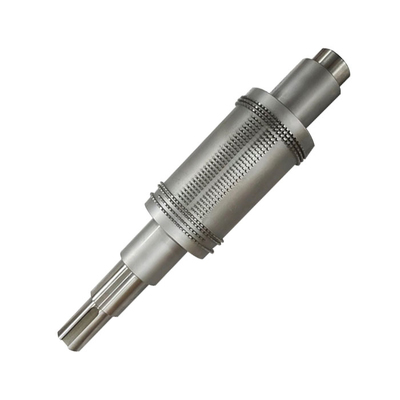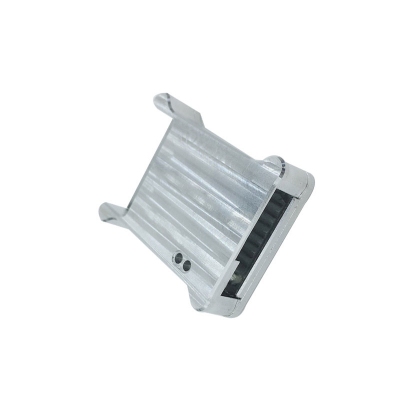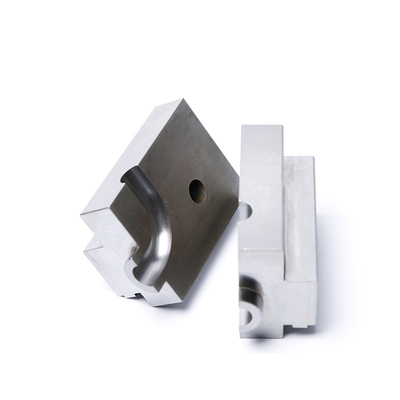Venting a Die Casting Mold: Methods and Implementation Devices
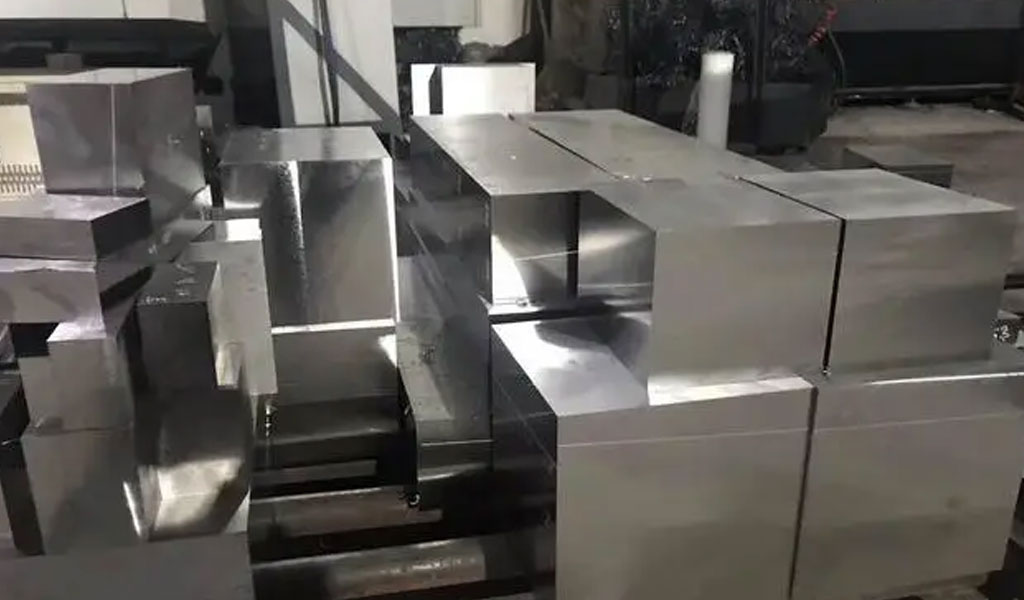
Die casting is a manufacturing process that involves forcing molten metal under high pressure into a mold cavity. The mold cavity is created using two hardened tool steel dies which have been machined into shape and work similarly to an injection mold during the process. Most die castings are made from non-ferrous metals, specifically zinc, copper, aluminum, magnesium, lead, pewter, and tin-based alloys. Depending on the type of metal being cast, a hot- or cold-chamber machine is used.
One of the critical aspects of die casting is the venting of the mold. Venting is the process of allowing air and gases to escape from the mold cavity during the injection of molten metal. Proper venting is essential to prevent defects such as porosity, blisters, and incomplete filling of the mold. This article delves into the methods of venting a die casting mold and the devices used to implement these methods.
Methods of Venting a Die Casting Mold
Venting a die casting mold can be achieved through various methods, each with its own advantages and limitations. The choice of method depends on factors such as the type of metal being cast, the complexity of the mold, and the desired quality of the final product.
1. Overflow Venting
Overflow venting is one of the most common methods used in die casting. This method involves creating an overflow channel that allows excess molten metal and gases to escape from the mold cavity. The overflow channel is typically designed to be larger than the runner and gate system to ensure that gases can escape efficiently.
Advantages:
- Effective in removing large volumes of gases.
- Reduces the risk of porosity and blisters.
- Can be easily integrated into the mold design.
Limitations:
- May result in increased material waste.
- Requires careful design to avoid affecting the final product quality.
2. Core Venting
Core venting involves the use of porous materials or vents placed within the core of the mold. These vents allow gases to escape through the core, reducing the risk of trapped gases within the mold cavity.
Advantages:
- Effective in removing gases from complex mold designs.
- Reduces the risk of porosity and blisters.
- Can be used in conjunction with other venting methods.
Limitations:
- May require additional maintenance and cleaning.
- Can be more complex to implement compared to other methods.
3. Peripheral Venting
Peripheral venting involves placing vents around the periphery of the mold cavity. These vents are typically small holes or slots that allow gases to escape from the edges of the mold.
Advantages:
- Simple to implement and maintain.
- Effective in removing gases from the edges of the mold.
- Can be used in conjunction with other venting methods.
Limitations:
- May not be effective in removing gases from the center of the mold.
- Requires careful design to avoid affecting the final product quality.
4. Vacuum Venting
Vacuum venting involves the use of a vacuum system to actively remove gases from the mold cavity. This method is particularly effective in removing gases from complex mold designs and ensuring a high-quality final product.
Advantages:
- Highly effective in removing gases from complex mold designs.
- Reduces the risk of porosity and blisters.
- Can be used in conjunction with other venting methods.
Limitations:
- Requires additional equipment and maintenance.
- Can be more complex to implement compared to other methods.
Devices for Implementing Venting Methods
Several devices are used to implement the various venting methods in die casting molds. These devices are designed to enhance the efficiency of gas removal and ensure the quality of the final product.
1. Overflow Channels
Overflow channels are integrated into the mold design to allow excess molten metal and gases to escape. These channels are typically designed to be larger than the runner and gate system to ensure efficient gas removal.
Design Considerations:
- Size and shape of the overflow channel.
- Placement of the overflow channel relative to the mold cavity.
- Material of the overflow channel to withstand high temperatures and pressures.
Materials:
- Tool steel
- High-temperature alloys
Applications:
- Suitable for simple to complex mold designs.
- Effective in removing large volumes of gases.
2. Porous Vents
Porous vents are made from materials that allow gases to pass through while retaining molten metal. These vents are placed within the core of the mold to facilitate gas removal.
Design Considerations:
- Porosity and permeability of the vent material.
- Placement of the porous vents within the mold.
- Durability of the vent material to withstand multiple casting cycles.
Materials:
- Ceramic
- Sintered metal
Applications:
- Suitable for complex mold designs.
- Effective in removing gases from the core of the mold.
3. Peripheral Vent Slots
Peripheral vent slots are small holes or slots placed around the periphery of the mold cavity. These slots allow gases to escape from the edges of the mold.
Design Considerations:
- Size and shape of the vent slots.
- Placement of the vent slots relative to the mold cavity.
- Material of the vent slots to withstand high temperatures and pressures.
Materials:
- Tool steel
- High-temperature alloys
Applications:
- Suitable for simple to complex mold designs.
- Effective in removing gases from the edges of the mold.
4. Vacuum Systems
Vacuum systems are used to actively remove gases from the mold cavity. These systems typically consist of a vacuum pump, vacuum lines, and vacuum vents placed within the mold.
Design Considerations:
- Capacity and efficiency of the vacuum pump.
- Placement of the vacuum vents within the mold.
- Durability of the vacuum system to withstand multiple casting cycles.
Materials:
- Stainless steel
- High-temperature alloys
Applications:
- Suitable for complex mold designs.
- Highly effective in removing gases from the mold cavity.
Comparison of Venting Methods and Devices
The following table provides a comparison of the various venting methods and devices used in die casting molds:
| Venting Method | Device | Advantages | Limitations | Applications |
|---|---|---|---|---|
| Overflow Venting | Overflow Channels | Effective in removing large volumes of gases, reduces porosity and blisters, easy to integrate | Increased material waste, requires careful design | Simple to complex mold designs |
| Core Venting | Porous Vents | Effective in removing gases from complex mold designs, reduces porosity and blisters, can be used with other methods | Requires additional maintenance, more complex to implement | Complex mold designs |
| Peripheral Venting | Peripheral Vent Slots | Simple to implement, effective in removing gases from edges, can be used with other methods | May not remove gases from the center, requires careful design | Simple to complex mold designs |
| Vacuum Venting | Vacuum Systems | Highly effective in removing gases from complex mold designs, reduces porosity and blisters, can be used with other methods | Requires additional equipment, more complex to implement | Complex mold designs |
Scientific Principles Behind Venting
The scientific principles behind venting in die casting molds revolve around the behavior of gases and molten metal under high pressure and temperature conditions. Understanding these principles is crucial for designing effective venting systems.
1. Gas Behavior
Gases within the mold cavity behave according to the ideal gas law, which states that the pressure (P), volume (V), and temperature (T) of a gas are related by the equation PV = nRT, where n is the number of moles of gas and R is the ideal gas constant. As molten metal is injected into the mold, the pressure and temperature increase, causing the gases to expand and seek an escape route.
2. Molten Metal Flow
The flow of molten metal within the mold cavity is governed by fluid dynamics principles. The viscosity, density, and surface tension of the molten metal affect its flow behavior. Effective venting ensures that the molten metal flows smoothly into the mold cavity without trapping gases.
3. Heat Transfer
Heat transfer plays a critical role in the solidification of the molten metal within the mold. Effective venting helps in maintaining a uniform temperature distribution within the mold, ensuring consistent solidification and reducing the risk of defects.
4. Material Properties
The properties of the mold material, such as thermal conductivity, strength, and durability, affect the efficiency of the venting system. Materials with high thermal conductivity help in dissipating heat quickly, while strong and durable materials ensure the longevity of the venting system.
Case Studies and Real-World Applications
Several case studies and real-world applications demonstrate the effectiveness of various venting methods and devices in die casting molds.
Case Study 1: Overflow Venting in Aluminum Die Casting
In a study conducted by a leading aluminum die casting manufacturer, overflow venting was implemented to improve the quality of aluminum castings. The study found that overflow venting significantly reduced the incidence of porosity and blisters, resulting in a 20% increase in product quality. The overflow channels were designed to be 1.5 times larger than the runner and gate system, ensuring efficient gas removal.
Case Study 2: Core Venting in Magnesium Die Casting
A magnesium die casting company implemented core venting to address issues with trapped gases in complex mold designs. The use of porous vents made from sintered metal resulted in a 30% reduction in porosity and a 15% increase in product yield. The porous vents were strategically placed within the core of the mold to facilitate gas removal.
Case Study 3: Peripheral Venting in Zinc Die Casting
A zinc die casting manufacturer used peripheral venting to improve the quality of zinc castings. The implementation of peripheral vent slots resulted in a 25% reduction in porosity and a 10% increase in product consistency. The vent slots were designed to be 0.5 mm in width and placed around the periphery of the mold cavity.
Case Study 4: Vacuum Venting in Copper Die Casting
A copper die casting company implemented vacuum venting to enhance the quality of copper castings. The use of a vacuum system resulted in a 40% reduction in porosity and a 20% increase in product yield. The vacuum vents were placed within the mold, and the vacuum pump was designed to operate at a capacity of 500 liters per minute.
Future Trends in Venting Technology
The field of die casting is continually evolving, with advancements in venting technology playing a crucial role in improving product quality and efficiency. Some of the future trends in venting technology include:
1. Advanced Materials
The development of advanced materials for venting devices, such as high-temperature alloys and ceramics, will enhance the durability and efficiency of venting systems. These materials will be able to withstand higher temperatures and pressures, ensuring longer lifespans and better performance.
2. Smart Venting Systems
The integration of smart technologies, such as sensors and automation, will enable real-time monitoring and control of venting systems. Smart venting systems will be able to adjust venting parameters dynamically, ensuring optimal gas removal and reducing the risk of defects.
3. Sustainable Venting Solutions
The focus on sustainability will drive the development of eco-friendly venting solutions. These solutions will aim to reduce material waste, energy consumption, and environmental impact, contributing to a more sustainable die casting process.
4. Customized Venting Designs
The use of advanced simulation and modeling tools will enable the creation of customized venting designs tailored to specific mold and material requirements. These customized designs will ensure optimal gas removal and enhance product quality.
Conclusion
Venting a die casting mold is a critical process that ensures the quality and consistency of the final product. Various methods, such as overflow venting, core venting, peripheral venting, and vacuum venting, are used to remove gases from the mold cavity effectively. Each method has its own advantages and limitations, and the choice of method depends on factors such as the type of metal being cast, the complexity of the mold, and the desired quality of the final product.
Devices such as overflow channels, porous vents, peripheral vent slots, and vacuum systems are used to implement these venting methods. The scientific principles behind venting, including gas behavior, molten metal flow, heat transfer, and material properties, play a crucial role in designing effective venting systems.
Case studies and real-world applications demonstrate the effectiveness of various venting methods and devices in improving product quality and yield. Future trends in venting technology, including advanced materials, smart venting systems, sustainable venting solutions, and customized venting designs, will continue to drive innovation and improvement in the die casting process.
In conclusion, proper venting is essential for ensuring the quality and consistency of die casting products. By understanding the various methods and devices used for venting, and the scientific principles behind them, manufacturers can design effective venting systems that enhance product quality and efficiency.
Reprint Statement: If there are no special instructions, all articles on this site are original. Please indicate the source for reprinting:https://www.cncmachiningptj.com/,thanks!
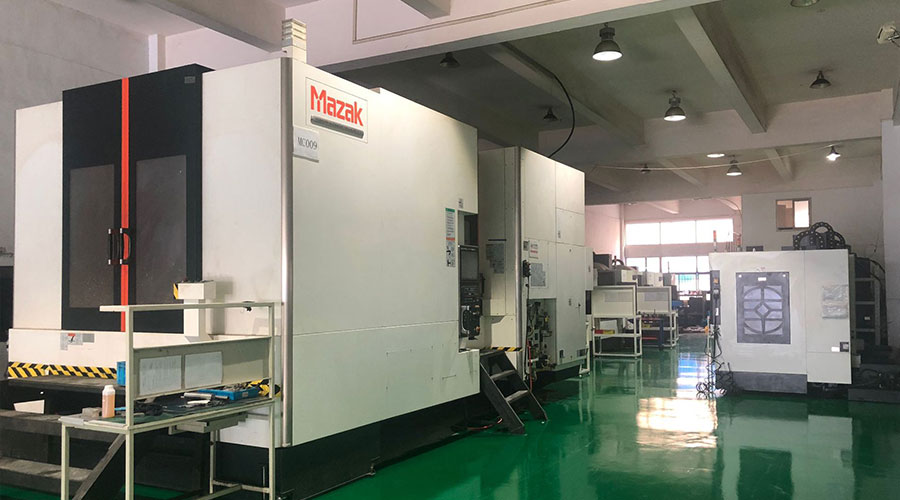 3, 4 and 5-axis precision CNC machining services for aluminum machining, beryllium, carbon steel, magnesium, titanium machining, Inconel, platinum, superalloy, acetal, polycarbonate, fiberglass, graphite and wood. Capable of machining parts up to 98 in. turning dia. and +/-0.001 in. straightness tolerance. Processes include milling, turning, drilling, boring, threading, tapping, forming, knurling, counterboring, countersinking, reaming and laser cutting. Secondary services such as assembly, centerless grinding, heat treating, plating and welding. Prototype and low to high volume production offered with maximum 50,000 units. Suitable for fluid power, pneumatics, hydraulics and valve applications. Serves the aerospace, aircraft, military, medical and defense industries.PTJ will strategize with you to provide the most cost-effective services to help you reach your target,Welcome to Contact us ( sales@pintejin.com ) directly for your new project.
3, 4 and 5-axis precision CNC machining services for aluminum machining, beryllium, carbon steel, magnesium, titanium machining, Inconel, platinum, superalloy, acetal, polycarbonate, fiberglass, graphite and wood. Capable of machining parts up to 98 in. turning dia. and +/-0.001 in. straightness tolerance. Processes include milling, turning, drilling, boring, threading, tapping, forming, knurling, counterboring, countersinking, reaming and laser cutting. Secondary services such as assembly, centerless grinding, heat treating, plating and welding. Prototype and low to high volume production offered with maximum 50,000 units. Suitable for fluid power, pneumatics, hydraulics and valve applications. Serves the aerospace, aircraft, military, medical and defense industries.PTJ will strategize with you to provide the most cost-effective services to help you reach your target,Welcome to Contact us ( sales@pintejin.com ) directly for your new project.
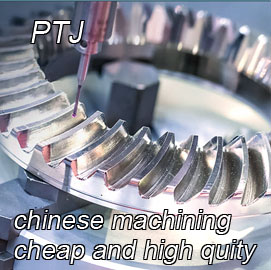
- 5 Axis Machining
- Cnc Milling
- Cnc Turning
- Machining Industries
- Machining Process
- Surface Treatment
- Metal Machining
- Plastic Machining
- Powder Metallurgy Mold
- Die Casting
- Parts Gallery
- Auto Metal Parts
- Machinery Parts
- LED Heatsink
- Building Parts
- Mobile Parts
- Medical Parts
- Electronic Parts
- Tailored Machining
- Bicycle Parts
- Aluminum Machining
- Titanium Machining
- Stainless Steel Machining
- Copper Machining
- Brass Machining
- Super Alloy Machining
- Peek Machining
- UHMW Machining
- Unilate Machining
- PA6 Machining
- PPS Machining
- Teflon Machining
- Inconel Machining
- Tool Steel Machining
- More Material

